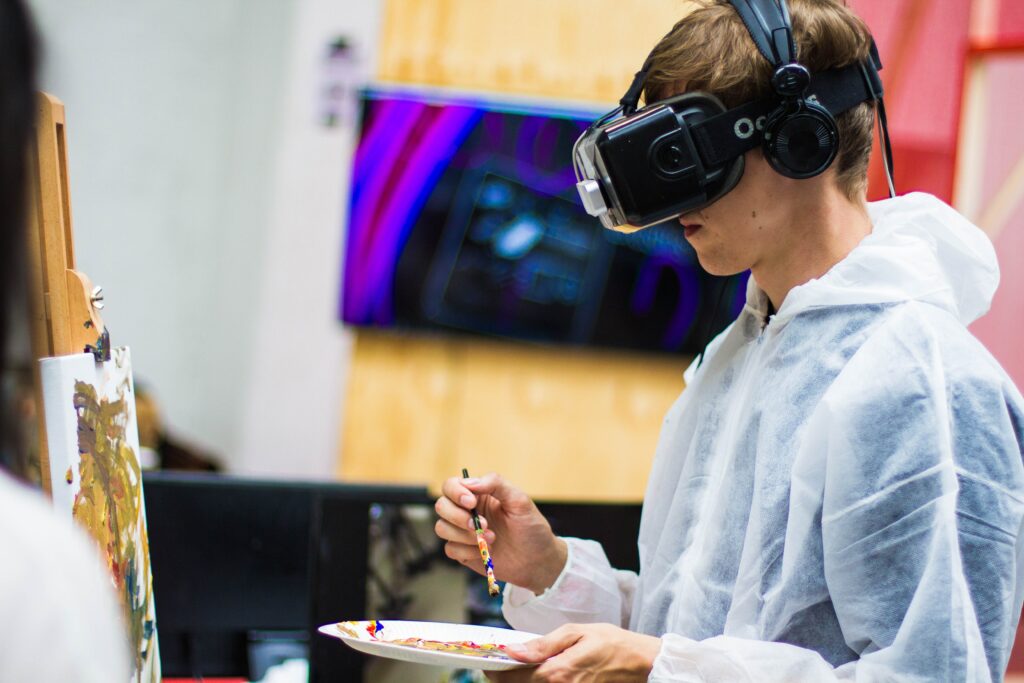From tours of The Smithsonian and The Louvre to paramedics at Georgian College training remotely, virtual reality is redefining the educational landscape. Its rise in popularity is leading numerous secondary and post-secondary schools to explore new and unique ways to use it to enhance learning experiences and engagement among students, especially international students. Here are three unique ways virtual reality is being used by educational institutions.
#1 – Campus Tours
One of the most important reasons for students to tour a campus is to become familiar with various aspects of campus life. They can visit dorms, classrooms, gyms, and cafeterias. It allows students to picture themselves living, studying, and thriving on campus full-time. It is also highly valuable for international students, who often miss out on the “campus tour” experience. With virtual tours, international students are able to tour multiple campuses and get a feel for what life would be like in a new country. They are able to develop a deeper connection to their school and surrounding town without having to book international travel.
Recently, many schools have had to move to online classes for the upcoming 2020 summer and fall semesters due to COVID-19. This has led to the partial and even complete closure of many campuses, in turn putting a hold on-campus tours, a major factor in selecting a campus to study at.
Virtual reality is a great solution for creating engaging, personal campus tours that can be viewed from anywhere in the world. Students and families who take virtual reality campus tours do not have to spend time and money or leave home.
With the ability to build your own cardboard VR headset, many schools are now including them within their acceptance offer packages. Students can then build the headset, insert their smartphone, and go on a virtual tour.
#2 – Graduation Ceremonies
High schools, colleges, and universities around the world have cancelled, postponed, or modified graduation plans due to the coronavirus pandemic. While some schools have hosted graduations over Zoom or at drive-in theatres, many are turning to virtual reality.
Looking for an alternative way to host a safe graduation ceremony, Purdue University decided to think outside the box. They were one of the first schools to create a virtual ceremony for students and family members. The live event could be attended from anywhere in the world.
“When the ceremony begins, [students] will feel like they are in the procession line marching with the on-site graduates,” says Patti Pelletier of Purdue University Global. “The virtual graduates will walk onto the stage, hear their name announced and see their picture displayed before returning to their seat.”
They created branded cardboard virtual reality headsets, that work with students existing smartphones, and mailed them to students.
Hot on the heels of Purdue’s virtual ceremony, students at UC Berkeley in California built a virtual version of their university campus – UC Blockley – and invited faculty and guests to host a ceremony for the class of 2020.
#3 – Field Trips
Field trips are a critical component at any level of study, from early primary school to college and university studies. They allow students to better educate themselves and take their learning out of the classroom.
With many large museums like The Smithsonian and the Royal Ontario Museum moving to fully virtual tours, the ability to host virtual field trips in 2020 is alive and well. Field trips are usually scheduled for early fall and late spring, but the weather still often interferes. However, it never rains or snows on a VR field trip.
With virtual reality, schools are able to take their students anywhere in the world to study, from Mount Everest to the Amazon, there are over hundreds of expeditions you can set out on.
Virtual reality is not a new technology, but its use within the education field certainly is. There is no telling what unique ways schools will continue to explore using it in the future.




